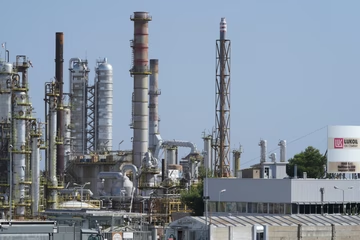
The European Commission on Wednesday concluded that Croatia was ready to adopt the euro on 1 January 2023, bringing the number of euro area Member States to twenty.
President of the European Commission, Ursula von der Leyen, was quoted as saying: “Today, Croatia has made a significant step towards adopting the euro, our common currency.”
“Less than a decade after joining the EU, Croatia is now ready to join the euro area on 1 January. This will make Croatia’s economy stronger, bringing benefits to its citizens, businesses and society at large. Croatia’s adoption of the euro will also make the euro stronger,” she said.
The EC and the European Central Bank on Wednesday released reports on convergence assessing the progress of member-states in meeting the criteria for the admission to the euro area.
The report covers seven countries: Bulgaria, the Czech Republic, Croatia, Hungary, Poland, Romania, and Sweden. Denmark has the permanent exemption from the obligation to adopt the euro.
The EC and the ECB prepare complementary biannual reports on convergence. The reports serve as a basis for the Council’s decisions on whether the aspirants meet conditions for entering the euro area.
Croatia’s adoption of the euro
“In light of the Commission’s assessment, and taking into account the additional factors relevant for economic integration and convergence, including balance of payments developments and integration of product, labour and financial markets, the Commission considers that Croatia fulfils the conditions for the adoption of the euro. It has therefore also adopted proposals for a Council Decision and a Council Regulation on euro introduction in Croatia.”
The Council is expected to make the final decisions on Croatia’s euro adoption in the first half of July, after discussions in the Eurogroup and in the European Council, and after the European Parliament and the ECB have given their opinions, reads the EC’s press release.
“The Report, therefore, marks a crucial and historic step on Croatia’s journey towards adopting the euro.”
The Croatian kuna joined ERM II on 10 July 2020 and observes a central rate of 7.53450 to the euro with a standard fluctuation band of ±15%. This is expected to be the exchange rate for the conversion.
Croatia has participated in the ERM II since 10 July 2020. It must participate in the mechanism without severe tensions and without devaluing its central rate against the euro for at least two years before it can qualify to adopt the euro. Being part of the Exchange Rate Mechanism is intended to help non euro-area countries prepare themselves for becoming part of the euro area. It is an important milestone towards adopting the euro.
The latest report reads that Croatia meets all the four convergence criteria and Croatia’s legislation is fully compatible with EMU legislation.
The average inflation rate in Croatia in the year ending in April 2022 stood at 4.7 per cent, which is below the reference value, and it is likely to remain below the reference value in the months ahead.
Concerning public finances, Croatia meets the criterion of the deficit to GDP ratio which was 2.9% in 2021, below the reference value of three percent.
The public debt to GDP ration is above the reference value, however, last year it saw a strong decrease falling from 87.3% in 2020 to 79.8%, and this marked narrowing satisfied this criterion.
Kakvo je tvoje mišljenje o ovome?
Učestvuj u diskusiji ili pročitaj komentare





 Srbija
Srbija
 Hrvatska
Hrvatska
 Slovenija
Slovenija



























































